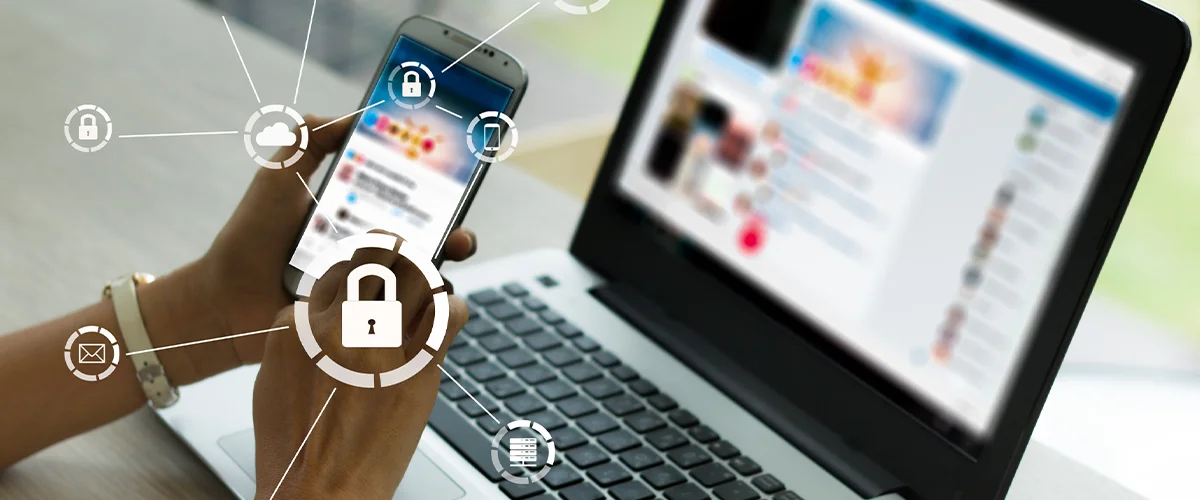The cybersecurity vulnerabilities that their firms confront have altered as more employees have moved to work remotely. While remote work has many advantages for businesses, it also poses unique security risks that aren’t present in regular office settings.
This article highlights those obstacles, discusses how they alter the nature of cybersecurity needs and provides recommendations for securing remote access.
Why is there a need to secure remote access?
When employees work remotely, the nature and extent of cybersecurity threats shift. Workers’ reliance on personal computers, routers, and other devices that could be infected with malware emerges as new forms of threats that are difficult for corporate IT employees to monitor and safeguard.
An employee’s requirement to access or send data across public internet connections when connecting to systems or storage resources in their company’s offices is a novel threat in this scenario. Third parties could eavesdrop on the links and steal valuable information if that data is not adequately secured, which would be more challenging to achieve if all data remained inside corporate networks.
How to be safe while you’re working from home?
Certain cybersecurity dangers, such as phishing, have become more frequent due to the surge in remote working. One significant difficulty is that an IT staff will oversee cybersecurity in most offices. Employees must be more mindful of cybersecurity threats as part of a distributed workforce working from home. Here is one of the best remote-working security recommendations to keep you and your employees safe while working from home.
Security Training : Organizations’ standard security safeguards for on-site staff are sometimes insufficient and impracticable for remote workers. Employees must be well-trained to understand the increased hazards they will encounter while working remotely, as well as the obligations they will be responsible for. The best method to ensure that each employee understands and accepts the dangers of working from home is to include cybersecurity training when onboarding new workers and to train existing employees with security refresher training.
Regular Audits : Internal audits and third-party penetration testing are required frequently. Auditing should be regularly as feasible as technology advances, and new software and techniques are developed. IT professional audits are critical for identifying gaps in current security standards and for discovering misconfiguration and poor security practices that could lead to more serious concerns down the road.
Email Encryption : Since the pandemic outbreak, the number of spam and phishing emails received has skyrocketed. Employers must not be complacent, even though most people are aware of them and know not to be deceived by these emails. Spam and phishing emails often contain a malicious virus, leading to an unknown employee providing criminals with critical information. Encrypting all emails ensures that the content is hidden, protecting any sensitive information exchanged during an email conversation and allowing only the intended recipient to see it.
Develop and Implement Clear Security Policies : Before the coronavirus outbreak, businesses were battling security issues arising from remote workers and the expanding use of personal devices.
Consider the following scenario:
- Personal devices may be allowed in specific instances if employees follow other security regulations. For example, you might require employees to install approved security software and only permit them to connect to your network using your business VPN.
- In other circumstances, you may instruct employees in sensitive areas to use just the laptops or other devices you have provided them with and use them only in ways you have permitted. You may, for example, limit the usage of these company-issued devices to work and prohibit employees from watching films or browsing social media sites on them.
In any situation, developing clear policies is critical. You should communicate these policies to employees and make sure they understand why they are vital and the repercussions of breaking them.
Two-factor authentication & authenticator apps : This is especially important when employees use their own devices from various parts of the world. Because two-factor authentication needs more than a password to access a machine, it decreases the risk of fraud, data loss, and identity theft. A security pin or a one-time code issued by a separate authenticator program is usually required as the second form of authentication.
In Closing:
Finally, security solutions, whether they are technologies, apps, or rules, are only effective if employees are informed of the risks and hazards of working remotely. Cybersecurity breaches can and do happen, but these risks are minimized with the proper regulations, training, and technologies in place, allowing you to operate safely and effortlessly from anywhere.
Stay tuned with us for more such interesting blogs.
And if you are seeking a reliable business process outsourcing partner, then FBSPL awaits your call. get-free-consultation.







